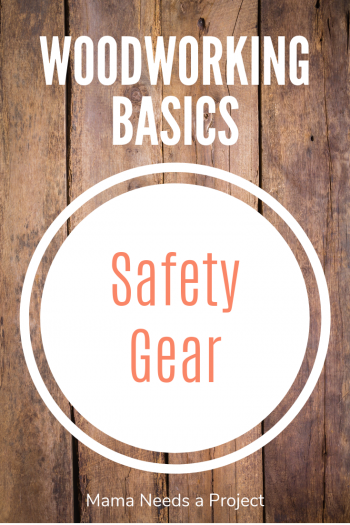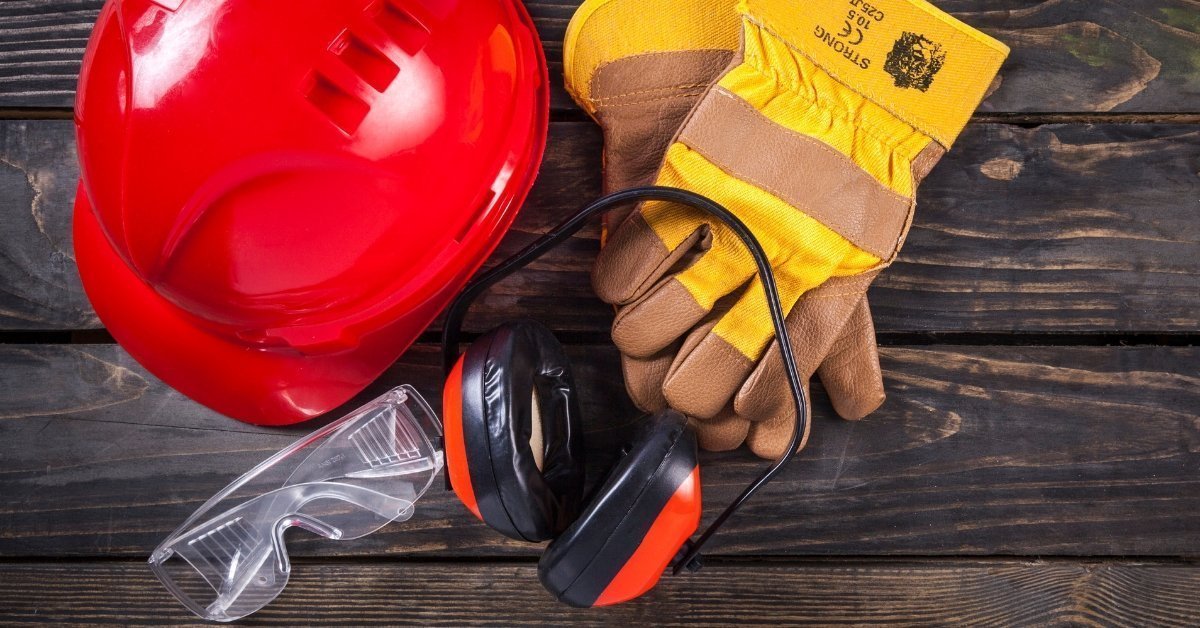Woodworking Safety Gear
Woodworking is a rewarding, useful hobby that can save you lots of money while providing that sweet satisfaction of seeing your ideas come to life. Is there anything better? I absolutely love that feeling of accomplishment!
Safety should always be the first priority when woodworking. There is a potential for injury if machines aren’t used properly. And, even when machines are used properly, there is still the potential for injury if you aren’t wearing appropriate safety gear.
Here are some safety essentials to keep you working safely in your workshop and onto the next project.
This post is part of the Woodworking Basics Series.
*This post contains affiliate links.

Hearing Protection
Saws, sanders and most other woodworking equipment is LOUD. It’s important to protect your hearing by shielding your ears from these loud noises.
There are lots of different types of hearing protection. I use the big earmuff style, but a lot of people like the small earbud style. It’s really your preference! I prefer the larger ones because I don’t have to worry if I’ve put them into my ear correctly to protect my hearing. I just pop them on and I’m ready to go.
Glasses
Glasses are so important to protect your eyes while woodworking. Dust or small pieces of wood could easily get into your eyes and cause injury if you don’t wear glasses.
A few years ago I was making repairs to our fence and while I hammered in a nail a tiny piece of wood fell off the fence and into my eye. I was wearing sunglasses, but it still got in somehow. It WAS AWFUL! I had to be driven to the ER where they flushed water through my eye with this terrible faucet thing that connected to my eyeball. I couldn’t open my eye fully for a couple days because it was scratched so badly and it was so painful. IT WAS AWFUL. Did I already say that? Seriously, it was the worst.
I always, always wear safety glasses. Eye injuries are no joke.
Breathing Mask
If you are doing a lot of sanding, you may want to consider wearing a breathing mask. That sawdusty air isn’t good to breathe in and can potentially cause you some trouble. If you’re working with pallets, I always recommend wearing a breathing mask. You don’t know what those pallets have been treated with or what material they have carried.
You may also want to wear a mask when painting or staining or when applying a protective finish to a piece. Always read the safety instructions for your products and then follow them. They’re there for a reason.
I have some basic paper-like masks that I use when I’m doing a lot of sanding. I also have a higher quality respiratory mask that I wear when I’m staining or painting in an area without airflow.
Check out these great breathing masks for woodworking for more info finding which is best for your needs!
Gloves
If you are painting or staining, I recommend these gloves to keep your hands clean. A lot of disposable gloves will break down when exposed to wood stain, but these hold up and keep my hands clean.
You may also want to wear gloves while handling the wood for your project, especially if you are using rough wood. Remember to make sure gloves are well-fitting and don’t interfere with your ability to use tools effectively and safely.
Check out my list of the best gloves for woodworking for more help finding the right gloves for you!
Be aware of your clothing
Make sure your clothing will not get caught on machines while you’re working. This means nothing too loose and no hanging strings or ties. If you have long hair, be aware of your hair, too! Hair hanging down while using a saw or other equipment is a recipe for disaster.
It’s always a good idea to wear closed-toe shoes. You don’t want to be tripping over flip flops or potentially drop something on your exposed foot while working.
First Aid Kit
Keep a set of the essential first aid items in your garage or workshop for those moments when things don’t go quite the way you planned. It will feel a whole lot better to put a bandaid on your finger than it will to wrap it up in duct tape. Trust me.
Get Building & Stay Safe!
I hope these safety tips didn’t scare you off! Woodworking is not dangerous if you know the proper way to use your tools and plan ahead by having the right safety equipment. Building and creating things from scratch is an amazing feeling! Make safety the top priority and keep on building!

